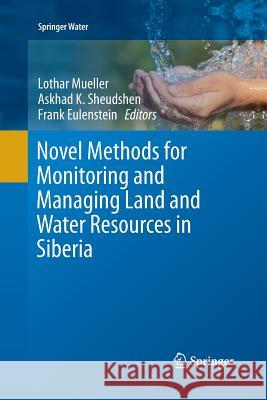Novel Methods for Monitoring and Managing Land and Water Resources in Siberia » książka
topmenu
Novel Methods for Monitoring and Managing Land and Water Resources in Siberia
ISBN-13: 9783319370385 / Angielski / Miękka / 2016 / 760 str.
Kategorie:
Kategorie BISAC:
Wydawca:
Springer
Seria wydawnicza:
Język:
Angielski
ISBN-13:
9783319370385
Rok wydania:
2016
Wydanie:
Softcover Repri
Ilość stron:
760
Waga:
1.07 kg
Wymiary:
23.39 x 15.6 x 3.96
Oprawa:
Miękka
Wolumenów:
01
Dodatkowe informacje:
Wydanie ilustrowane











